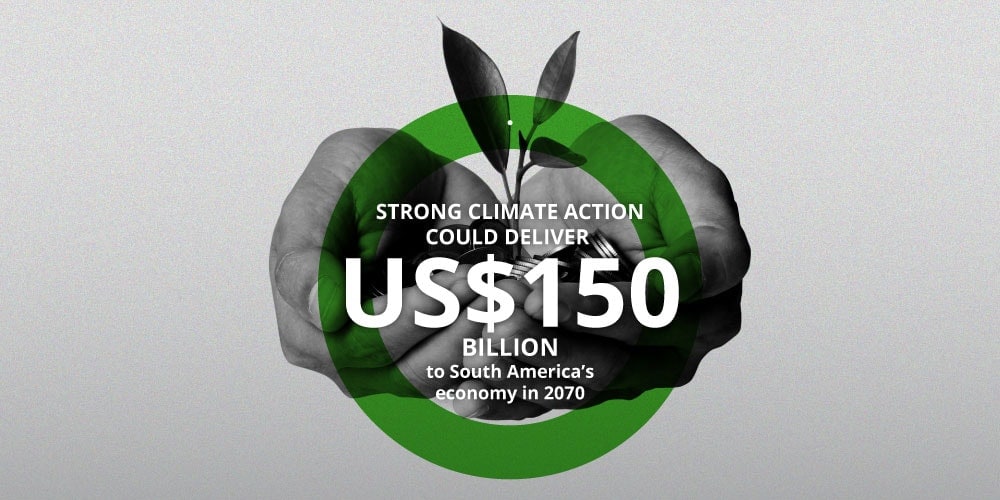The turning point
A new economic climate in South America
It’s time for South America to change how it plans for its economic future.
Unless the world unites to decarbonize, carbon emissions and temperatures will continue to rise, and an increasingly climate-damaged economy will become the new normal, leaving South America one of the worst-affected regions on earth. But there is an alternative path.
Fully committing to a decarbonized future would create an economic turning point for South America.
By 2070 the region could have 2 million more jobs than it otherwise would in a climate-damaged, emissions-intensive world. The net benefit of the transition could grow to 1 per cent of GDP in 2070–US $150 billion–a benefit that could increase with each subsequent year.
Transforming South America’s economies to create a net-zero future will require a significant commitment of leadership, time, resources, and coordination. But it offers a path to a prosperous and low-emission future. This potential future avoids the worst impacts of climate change and creates sustainable long-term economic growth for South America and the world.
The turning point
A new economic climate in South America




